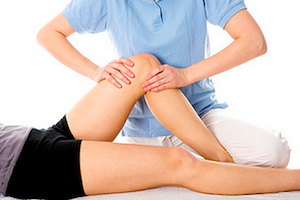It is inflammation of the patellar tendon at the tibial tuberosity. It appears as a lump just below the knee and can often be painful and red. Osgood Schlatters Disease is more commonly seen in adolescents around the ages of 9 to 16 and seems to be more commonly occurring in boys.
It also seems to be more common in those adolescents who are more active in sports in particular running and jumping sports such as Basketball, Netball, Soccer, Football and Volley ball although osgood schlatters can also appear in adolescents who are not particularly active.
During growth spurts there is a lot of activity going on in the muscles ligaments and tendons and bones. The muscles can become tight in the front and back of the thigh. The result is swelling in the attachment of the patella tendon to the tibial tuberosity.



